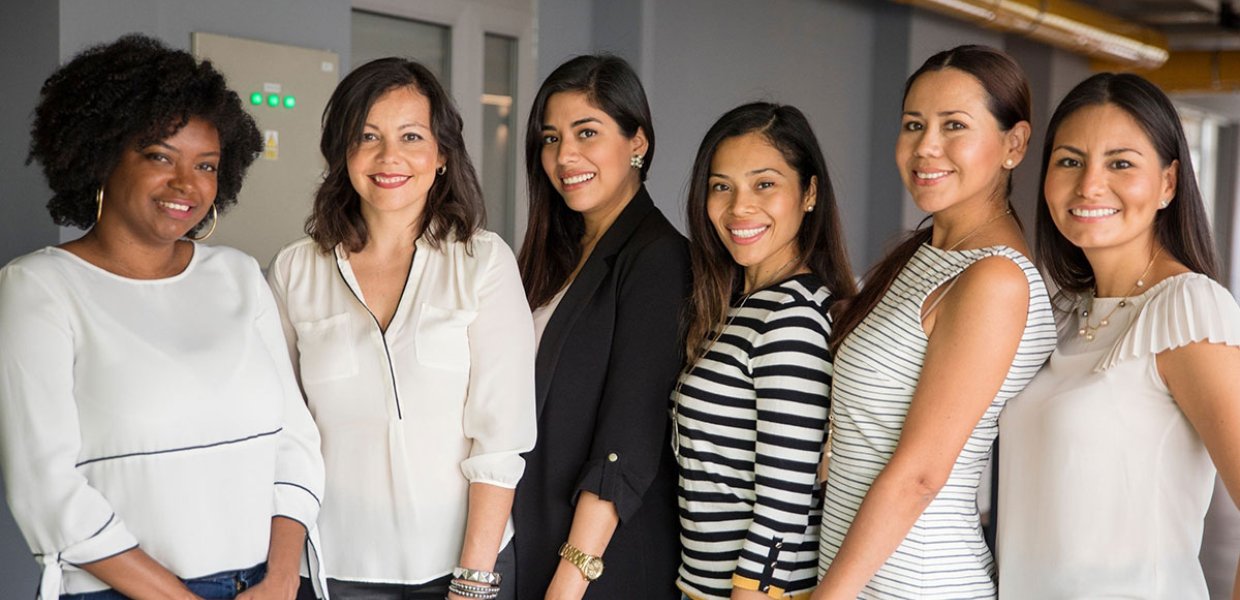Lauren Wesley Wilson literally changed the communications industry over lunch. In 2011, Wilson was working at an agency and realized that nobody in executive or senior leadership looked like her. She gathered 34 women of color for a networking lunch she called ColorComm. They listened to speakers, shared media contacts, and talked job opportunities. Everybody left wanting to do it again.
The ColorComm community is strong, and this kind of powerful grassroots change is going to be felt far outside of just the communication industry.
One lunch became two, then three, then it became an ongoing series. Word of mouth brought more attendees. Women started connecting with each other outside of the lunches. They got each other jobs, helped with projects, even went to each other’s weddings.
Wilson decided to make it official and turn ColorComm into a membership network. Fast forward 10 years and it’s the country’s leading organization for women of color in communications, media, marketing and advertising, with over 100,000 professionals, local chapters in ten cities, and more than 100 local programs each year.
And it’s all thanks to Lauren Wesley Wilson.
Of course, the industry still has a long way to go. According to data from PRovoke Media, white men are paid more on average than any other demographic in communications and are promoted more often. 51% of partner-level employees are men, despite the fact that they only make up 25% of the total PR workforce.
Wilson’s work seeks to correct this. She’s an activist who sees the value in everyone’s perspective, and who knows that diversity, equity and inclusion is so much more than a pledge or a corporate initiative — it’s people helping each other and connecting with each other on a human level.
That kind of connection requires vulnerability. A few years ago in Miami, I saw Wilson tell a story at the annual ColorComm Conference. At the previous year’s event, Wilson said she had a bit of a breakdown. She was taking on too much — presenting, working with speakers, running logistics, as well as managing ColorComm Inc. — and the enormity of the work was starting to sink in. She’d started ColorComm for personal reasons, and now found herself a figurehead for a whole industry movement. She went to the bathroom, cried her eyes out, and thought seriously about quitting. Her friends and the ColorComm community talked her out of it, and a year later here she was, telling this story on stage to make a point about openness, community and connection.
I was stunned to hear her story. Leaders are often afraid that revealing a moment of vulnerability will make them look weak. But so often it’s the opposite: vulnerability brings people in. That’s what happened in Miami that day — the whole audience was right there with Wilson, thinking hard about the personal costs and challenges of driving change. I think it made a few thousand people Lauren Wesley Wilson fans for life. I know it did for me.
The ColorComm community is strong, and this kind of powerful grassroots change is going to be felt far outside of just the communication industry. We live in a world that wants all sorts of stories. And diverse stories require diverse storytellers. Every business that speaks to wide audiences needs to be thinking hard about how to hire, retain and elevate diverse communicators, and that’s where Wilson comes in.
Wilson, more than anybody else I can think of, has created an escalator to put the right communicators in the right roles and help tell the stories audiences crave. All in ten years. I can’t wait to see what Wilson does in the next ten.









